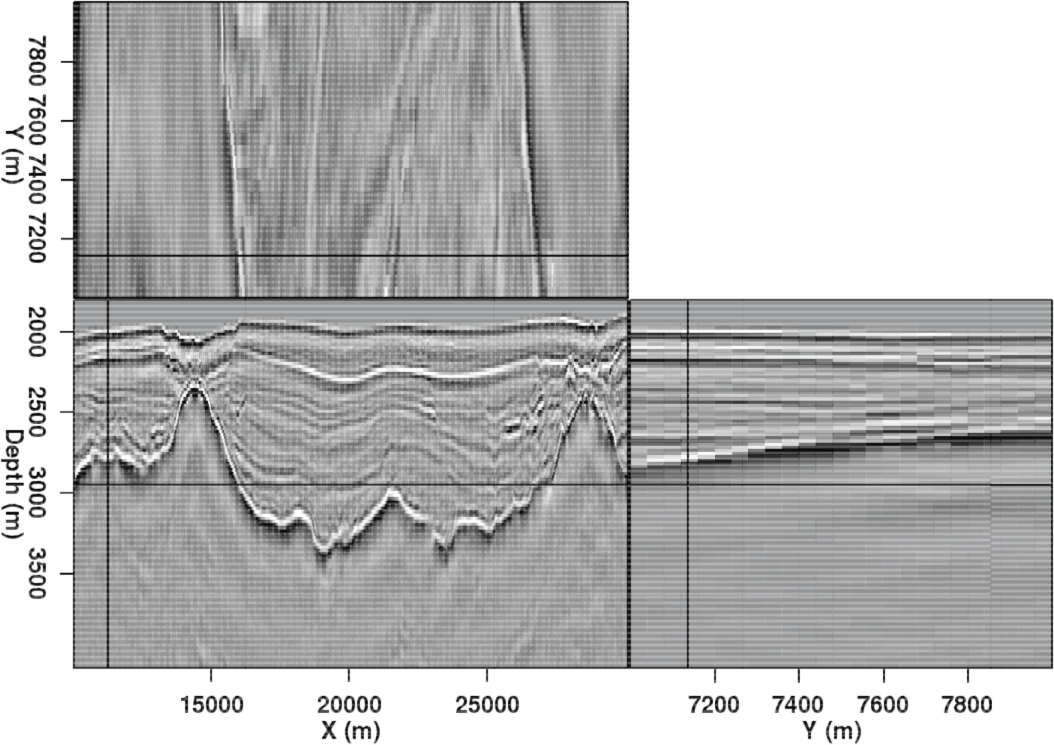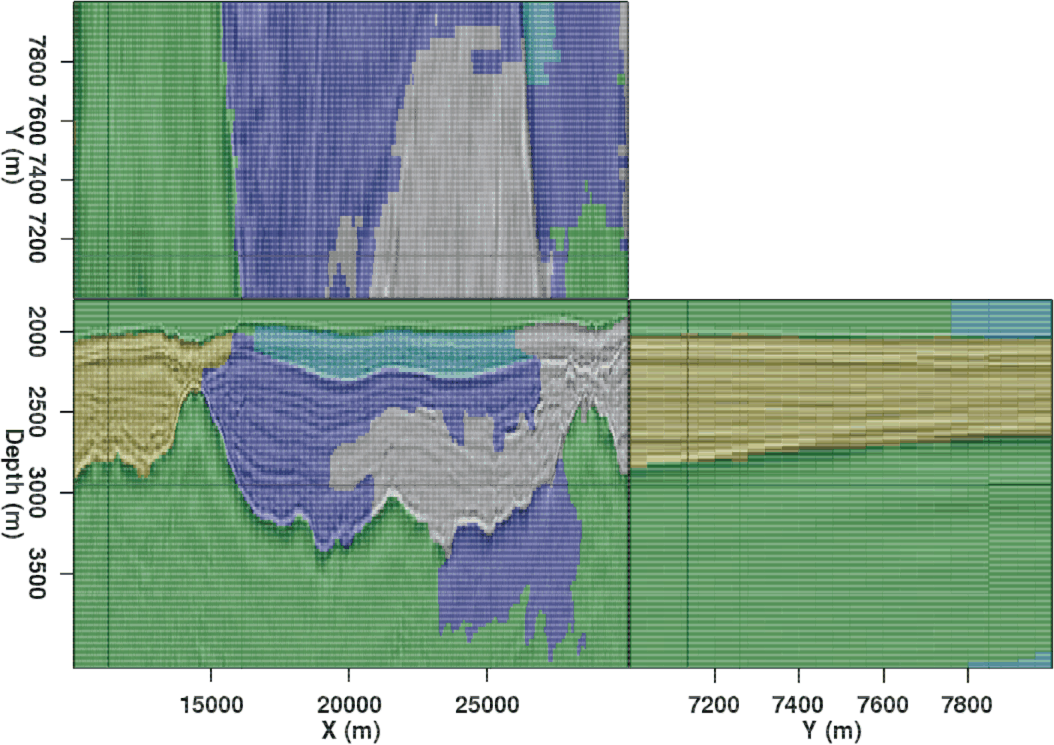 |
 |
 |
 | A new method for more efficient seismic image segmentation |  |
![[pdf]](icons/pdf.png) |
Next: Conclusions
Up: Results
Previous: Accuracy comparison
The pairwise region comparison strategy described here is easily extendable to three dimensions. While the theory and general approach remain the same as with the two-dimensional case, in three dimensions the stencil used to construct the graph must change. Along with the four co-planar segments extending from each pixel used for the second stencil in Figure 5, a 3D stencil must incorporate four additional segments that extend the graph edges into the extra dimension. Fortunately, the additional information this brings to the segmentation algorithm allows for the stencil's segments to shrink in length; initial tests indicate that the most accurate results are obtained with segments that are three pixels in length. Thus, the computational impact of extending any algorithm from two to three dimensions is somewhat mitigated in this case.


|
|---|
3dimg,3dseg
Figure 10. Slices through a 3D image (a) and the resulting 3D segmentation (b) using the new PRC algorithm.
|
|---|
![[pdf]](icons/pdf.png) ![[pdf]](icons/pdf.png) ![[png]](icons/viewmag.png) ![[png]](icons/viewmag.png)
|
|---|
Figures 10(a) and 10(b) show a segmentation example resulting from a preliminary 3D implementation of the new algorithm. While further improvements seem necessary, note that both the salt body (in multiple segments) and the water column have been accurately identified.
 |
 |
 |
 | A new method for more efficient seismic image segmentation |  |
![[pdf]](icons/pdf.png) |
Next: Conclusions
Up: Results
Previous: Accuracy comparison
2010-05-19

